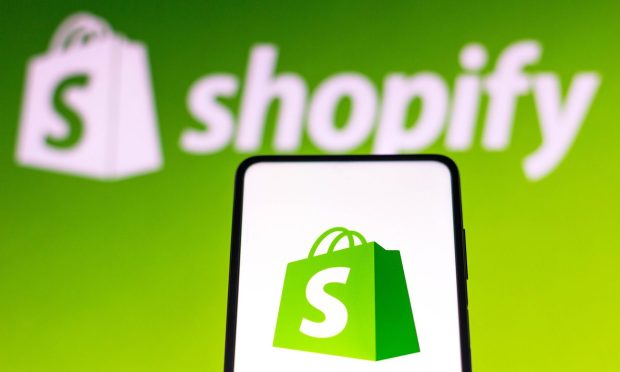Last-Mile Logistics Could Decide Winner in Growing Amazon vs Shopify eComm Rivalry

It’s tempting to say that eCommerce is simple — it’s Amazon vs. everyone else.
After all, with an army of Prime members, scale and reach make Amazon the 800-lb. gorilla in the space.
But the winner of the war waged online for share of wallet and consumers’ loyalty — and merchants’ loyalty too — hinges on a number of factors. And features, of course.
At first glance, it does seem that Amazon has built impressive moats around its business. PYMNTS’ own data show that, as estimated in the “Benefits of Membership” survey, 166 million consumers are Amazon Prime members — and that’s double other mass merchant memberships logged by firms such as Walmart+ and Costco. With a a bit more granular detail a greater percentage of spend across any number of categories, from groceries to electronics is going to Amazon versus competitors like Walmart.
Read more: 166M US Consumers Are Amazon Prime Members
Shopify’s own earnings supplementals from earlier this year show the market share joust between the companies — estimating that Amazon had 41% of U.S. retail eCommerce sales last year, with Shopify at 10.3%.
That’s a pretty wide gap, but it’s one that can conceivably be narrowed. Both Amazon and Shopify compete for merchant loyalties — and that means, down the line, that consumers’ loyalties are captured as well.
One Click, and More, at Checkout
A simpler checkout process means the world to consumers, and the merchants serving them. Make it easier to make the payment, and it follows that conversion rates rise. Amazon, of course, has been synonymous with a streamlined one-click approach for quite a while.
Shopify’s own approach, with Shop Pay, which stores and encrypts its online consumers’ card details (and thus click quickly through to purchases), has to bring installments into the mix. That function was opened up, through Shop Pay Installments, last year. Buy now, pay later (BNPL) growth has been in triple digits.
Read also: Shopify Extends Affirm Partnership To Offer More Merchants Shop Pay Installments
The BNPL option at checkout is a timely one. PYMNTS has found that roughly 20% of consumers have used BNPL in the past year.
Merchant/Consumer Connection
The key competitive differences between Shopify and Amazon, and the traditional relationships with merchants have boiled down to the fact that Shopify operates as an eCommerce platform. Shopify has built its model by giving the merchants the ways and means to build their own storefronts for direct contact with consumers. Amazon’s approach is to let myriad sellers appear on its marketplace alongside one another.
In recent days, Amazon has sought to deepen its seller relationships by giving them more of a direct-to-consumer option. As noted in this space, the newly announced Buy With Prime will roll out through 2022 as merchants are invited to participate, including those not selling on Amazon or using Fulfillment by Amazon (FBA).
In that case, Amazon’s payments and fulfillment services are available at checkout.
Also read: Amazon Takes on Shopify with Buy With Prime
The Last Mile
That nod to fulfillment services is what may be the determinant of whether Shopify gains more ground vs. Amazon (or not). After all, consumers expect ever-smaller windows for deliveries made to the doorstep.
Scale and deep pockets matter quite a bit here. Amazon said that it would invest $1 billion in its “Industrial Innovation” fund, which is earmarked for supply chain and logistics. Looking through the most recent annual filing, we see that in 2021, Amazon spent about 16% of its sales on fulfillment, and that shipping costs (which include sortation, delivery and fulfilment) were nearly $77 billion last year.
For Shopify, the reported discussions to buy startup Deliverr, in a bid that would bring goods to consumers’ doorsteps in two days or less. And it represents a move beyond enabling online storefronts, while helping those merchants defray some of their own operating costs. The eCommerce gulf between Amazon and Shopify is wide, but can be winnowed down a bit.
Read here: Shopify Eyes Tech Startup Deliverr Acquisition to Streamline Order Fulfillment
